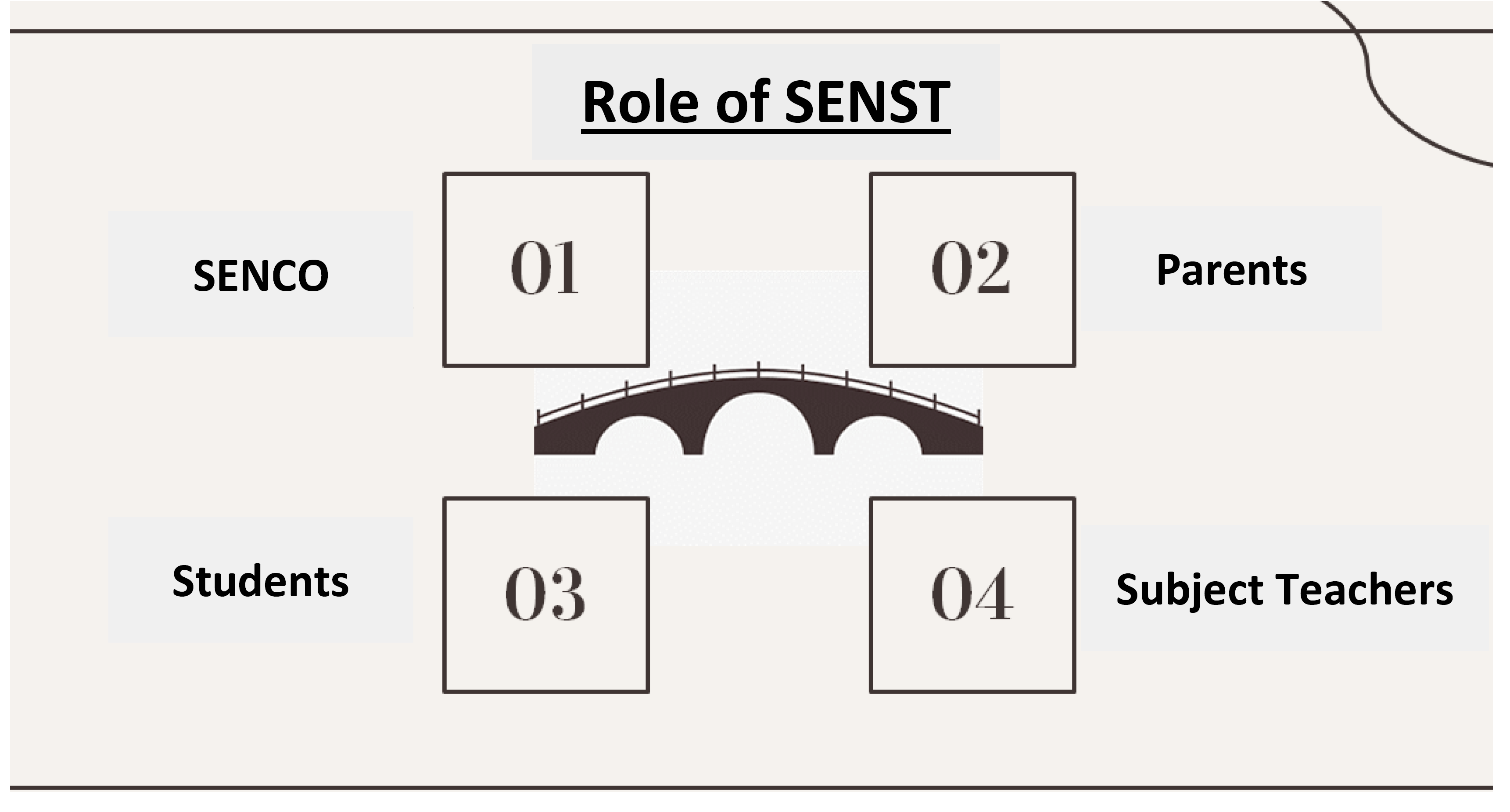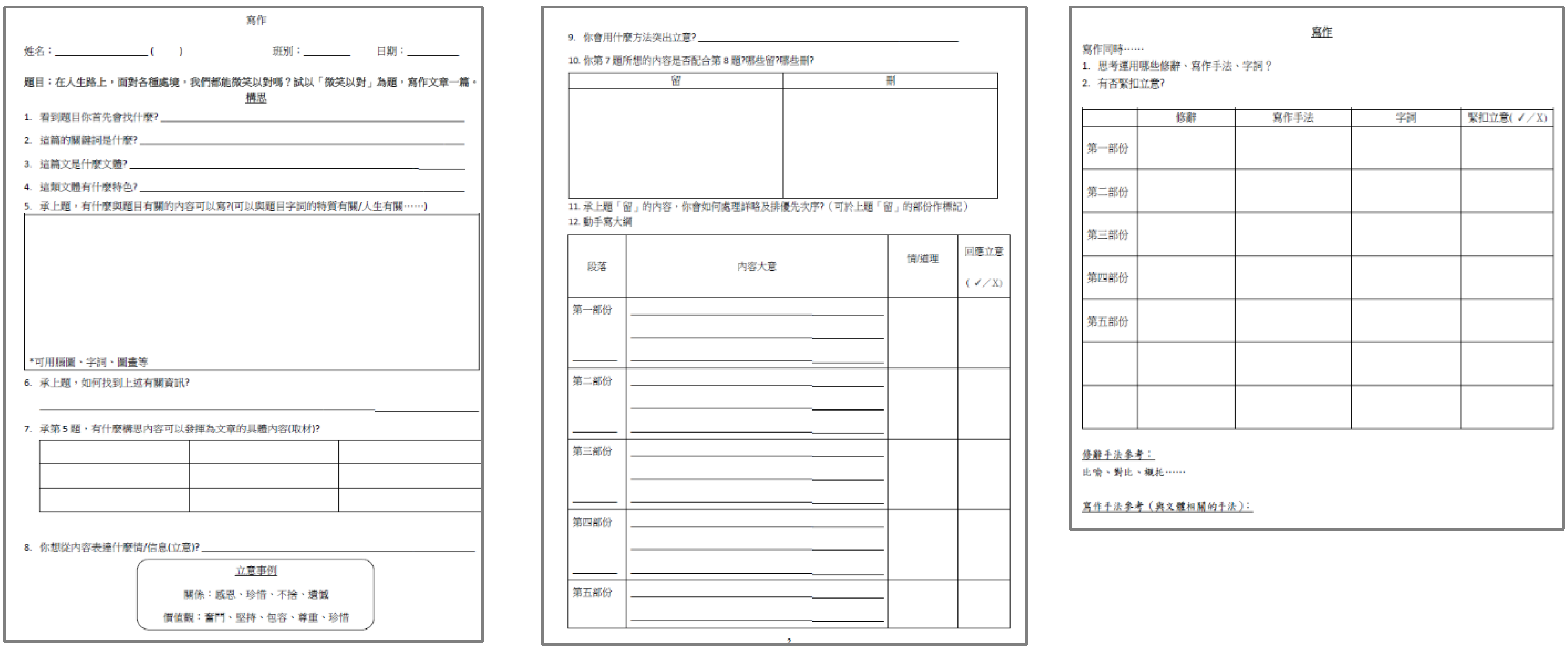The Mission Covenant Church Holm Glad College
Role and Duties of Special Educational Needs Support Teacher
If I were asked to choose an object to describe the role of a Special Educational Needs Support Teacher (SENST), it would be a “bridge”. As a SENST, I would like to serve as a communication bridge among the Special Educational Needs Coordinator (SENCO), parents, students and subject teachers, offering them a variety of support.

Assisting SENCO and sharing administrative duties
The school needs to handle an immense amount of administrative and operational work in relation to catering for students with special educational needs (SEN). SENCO’s workload is particularly heavy, and SENSTs can share the burden and provide input. In view of students with different SEN, SENCO hopes that each student in need receives pertinent help. As such, I assist SENCO to facilitate the communication between parents and various subject teachers, with respect to the students’ learning in school, social needs, examination accommodations, life planning, etc. I also discuss with other members of the student support team (SST) the policies for examination accommodations, examination coordination and invigilation and small group support strategies, and assist in counselling students with SEN.
Building close connections with parents
To help parents of students with SEN better understand their children’s learning progress, SENSTs maintain regular contact with the parents, keeping them informed of the learning and needs of their children based on class performance, the “Summary of Support for Students”, etc. SENSTs also exchange views with parents regarding their concerns, devise learning strategies and examination accommodations suitable for their children when necessary, and offer professional advice on life planning and further education. For instance, for a gifted student with specific learning difficulties, we would recommend to parents that the student should use the speech-to-text software and join some social and inspirational groups so as to improve his/her learning and interpersonal skills.
Adopting strategies to design materials for enhanced teaching effectiveness
To enhance the learning effectiveness of students with SEN, SENSTs may adopt evidence-based strategies, such as scaffolding and “think aloud”, to design school-based teaching materials according to their learning characteristics and needs. This year, we experimented the “think aloud” strategy in Secondary 4 (S4) Chinese lessons to help students improve their writing skills. The teaching materials mainly included a set of pre-writing procedures for guiding students to think aloud and express creative ideas step by step, thus helping them catch up with the pace of learning in class. After designing the teaching materials, I conducted a pre-test in my class first to identify the baseline of my students’ writing ability. I also administered a post-test after teaching and analysed the effectiveness of the teaching materials by comparing the differences between the pre-test and the post-test results. During the implementation, I opened up my classroom, invited colleagues to observe my lessons, and then revised and refined the teaching materials based on their feedback on the design and classroom practices.

SENST developed a scaffolding framework to help students write step by step
Creating a sharing culture by passing on and promoting teaching materials
SENSTs develop teaching materials on a yearly basis to meet the school’s specific needs to improve the quality of teaching in regular classroom. In the 2021/22 school year, I assisted in the development of Chinese teaching materials for S4 level, which included two units of writing (descriptive writing on people and reflective writing on expressing emotions). The materials comprised a comprehensive teaching plan, presentation slides and worksheets for teachers’ use at S4 level. Teachers reflected that the flow of the teaching plan was meticulous, which helped the less able students learn writing and improve their skills. Students’ improvement was notably shown in their examination results. After teaching, I reviewed with teachers of the same class level, covering the overall teaching procedures and design, to identify areas for improvement. The teaching materials have then been refined and revised on a continuous basis for future use. From this starting point, the measure will be implemented at both S4 and S5 levels in the coming school year, and more teachers will be involved in the design of the teaching materials. With collective wisdom of teachers, the revised teaching materials will better suit students’ needs. To this end, SENCO and I regularly share and exchange ideas with teachers of different class levels on issues such as the design of school-based teaching materials, teaching strategies and experiences in catering for learner diversity. Subsequently, more teachers will implement the measure, and we will help them develop their own teaching materials to enhance the learning effectiveness of students with SEN, thereby benefiting more students in need.
Case sharing
I still remember a student with specific learning difficulties, whose Chinese Language results always lagged behind in class when he was studying in junior forms. No sooner had he got promoted to upper secondary than I discovered that the student struggled tremendously with writing. Very often, he had to rack his brain to think about what to write and spend a considerable amount of time linking up sentences. Subsequently, he used to fail to complete his essays within the time limit in examinations. However, after two years of training, especially in using the “think aloud” strategy to shape the entire thinking process in writing, the student followed step-by-step instructions and practised the whole thinking process. As a result, not only did the student speed up his thinking process and spend less time writing up his essay in examinations, his writing also became more in-depth and sensible. He even achieved an outstanding result in his S5 second-term examination. Throughout the whole process, I have witnessed the student’s progress and increasing confidence in his own learning. His achievement has been the greatest fulfilment of my SENST work.
Conclusion
Being a SENST for two years, I would like to thank the school and SENCO for giving me the opportunity to ignite my passion for teaching Chinese and cater for students with SEN using my expertise in integrated education. I firmly believe that every student is unique and has his/her own potential. It is of our responsibility to unfold it and help them unleash it. I hope that in the days to come, I can continue to offer my assistance to the school and SENCO by putting myself into the shoes of the school and every student, so that every student can shine.
